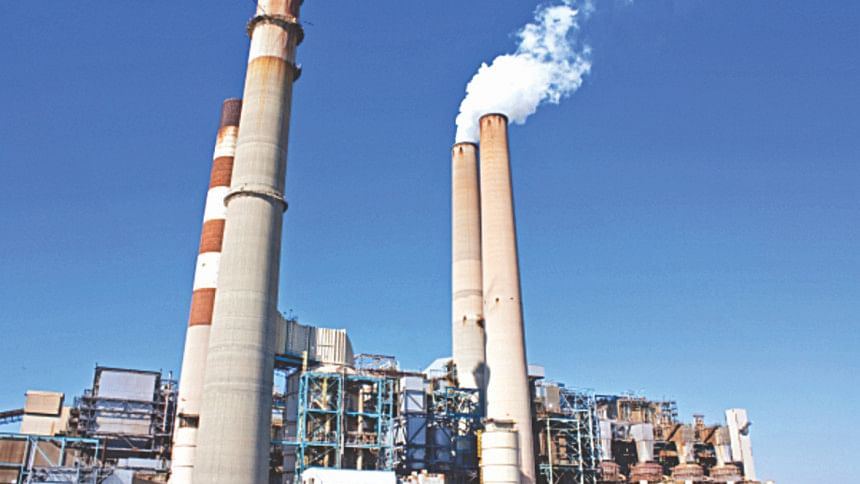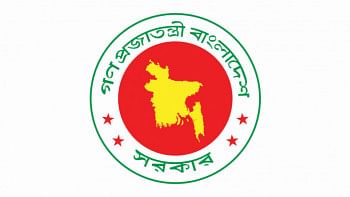Risks and challenges of the economy in 2016

Bangladesh enters 2016 with its economy facing several challenges. The key challenges on the domestic front continue to be the acceleration of private investments and the better use of public sector resources to implement important infrastructure and social programs. The investment outlook is clouded by uncertainties pertaining to the dynamics of domestic politics; structural reforms; developments in infrastructure and energy; and global economic prospects. Bangladesh has the potential to attract FDI from a wide range of countries, including relocation away from China that is currently underway. If the government fails to provide necessary infrastructural support in the areas of power, gas and serviced land by establishing Special Economic Zones (SEZ) rapidly, and improved transport facilities through better connectivity and ports, many of these new opportunities will be lost to international competitors such as Vietnam, Cambodia and Myanmar.
THE CHALLENGES
The inability to realise the 8% growth target under the Sixth Five Year Plan was primarily attributable to shortfall in both domestic and foreign private investment as supply side constraints did not ease. With increase in the size of public investment to nearly 7% of GDP, which by international standards is rather sizable, the quality of spending has become all the more important for economic efficiency. Overall, the 8% growth target by the end of the Seventh Five Year Plan is attainable, provided necessary supporting reforms and policies are put in place. Macro-economic policies have been congenial for the development of the private sector in Bangladesh, but the general state of the business environment has remained problematic.
The pace of recovery of the European Union economies, the primary destination of Bangladeshi exports, following the European Debt Crisis will be critical. Further deterioration in the currency realignment—entailing greater appreciation of the US currency against other major currencies—in the global currency markets will affect the competitiveness of Bangladeshi exports. The pace of tapering off of the Quantitative Easing by the US Federal Reserve, and its impact on the dollar interest rates in the international capital market will raise the cost of financing for future investment in Bangladesh. Recent increase in the Federal Funds Rate in the US has already set the tone in that direction.
Macro-economic policy space is generally limited in a developing economy like Bangladesh. Demand support should come from fiscal policy rebalancing aimed at boosting longer-run growth, through tax reform and spending reprioritisation. Lower oil prices have reduced price pressures and external vulnerabilities as well as eased the burden on monetary policy. Exchange rate appreciation has the potential to offset the demand impact of oil-related terms-of-trade gains. Structural reforms to raise productivity and remove bottlenecks to production are urgently needed.
Risks to fiscal sustainability stem from both direct and indirect contingent liabilities, including those from the large, unfunded General Provident Fund, and from State-Owned Enterprises. The recent increase in pension from 80 to 90% of basic pay has increased the government's future pension liabilities. Fuel subsidies also present risks if global fuel prices increase, as the government has not yet taken advantage of the lower prices to change policies for fuel and fertilizer subsidies, as has occurred in India, Pakistan, Egypt and Indonesia.
PRIORITY AREAS OF REFORMS
The current juncture puts a premium on structural reforms that ensure sustainable adjustment to a new equilibrium of low commodity prices and gradually tightening financial conditions. Several large developing countries are implementing ambitious reform agendas, but Bangladesh is lagging behind. Structural reforms are particularly challenging in the following areas:
FINANCIAL
There has been no visible reduction in non-performing loans as habitual defaulters continue their delinquent behaviour with impunity. The banking sector remained entrenched in high non-performing loans and uneven interest rate spreads, reflecting the inadequacy of competition and contestability. Regulatory capital to risk-weighted assets were just 7.5% (as of June 2015), placing banks in some risk in the event of significant defaults. While Bangladesh Bank has taken a few steps to improve supervision by deploying digital technology to investigate big financial transactions, inaction on making the defaulters accountable has not helped change the game.
ENERGY
The drop in oil prices generated substantial fiscal savings because fuel prices were heavily subsidised. Bangladesh has not made sufficient use of this opportunity either to build fiscal space, which would allow an effective counter-cyclical response in the event of an economic slowdown, or to invest in infrastructure or human capital. In fact, subsidies for electricity increased in FY 2015 because of increased reliance on costly liquid fuel-based power plants, keeping total energy subsidies nearly unchanged as a share of GDP.

FISCAL
The government is still committed to implement the new VAT law from July 2016. However, the FY16 budget was short in providing directions on reforms to improve the effectiveness of public expenditure and revenue administration. There has, however, been some progress in the automation of tax registration, reporting, administration, and collection. Also, local government finances need to be brought on to a more sustainable footing, addressing expenditure and revenue mismatches across different levels of government and reinforcing local government revenue capacity, including that through better property taxation.
ADMINISTRATIVE
Administrative reforms to streamline court proceedings to facilitate contract enforcement have generally stagnated. Much of the reform agenda, including a broad-based reform of state-owned enterprises, remains to be implemented. Issues that need to be addressed include: implicit and explicit government guarantees; non-binding budget constraints; low efficiency; and a lack of transparency and accountability.
THE LIKELY HEADWINDS
Balance of payments (BOP) pressures could emerge from lost export production and slower remittance growth. Prolonged slow growth in advanced and emerging markets can particularly have an adverse impact on garment exports, thereby widening the trade deficit. However, the relatively low-income elasticity of demand for garment exports and Bangladesh's significant cost competitiveness would act as mitigating factors. Persistent dollar strength can further erode the cost advantage in the European market. Remittances have been flat so far in the first half of FY 2016, despite 5.4% growth in the stock of Bangladeshi workers abroad in FY 2015.
Greater downward flexibility in the taka-dollar exchange rate would be needed while resisting further nominal exchange rate appreciation against the dollar. This may need to be coupled with some fiscal easing, preferably by boosting expenditures on infrastructure building and maintenance, with possible budgetary provisions to beef up existing safety net schemes further.
Deterioration in the solvency of state-owned banks is also likely, assuming failure to recover all non-performing loans and measuring capital on a conservative basis. The additional re-capitalisation needs of state-owned banks could be between 2-3% of FY 2015's GDP. Under-capitalised banks should be held strictly accountable for improving their financial performance. Stricter oversight of their lending activities and more aggressive recovery of bad loans are needed, backed by recapitalisation contingent on agreed reforms to improve longer-term viability.
Greater attention is needed to swiftly reach the standards of safety and labour rights compliance in garments; to complete the critical ongoing road, electricity and gas development projects; to improve the efficiency and financial solvency of the banking sector. This can be done by easing controls over the interest rate; through better banking supervision and oversight by the Bangladesh Bank; through improved corporate governance in public banks; and through provide access to serviced land to domestic and foreign investors through the SEZs. Establishing a sound financing framework to meet the country's growing infrastructure needs remains a key challenge for policy makers. Efficient transport, reliable energy, safe drinking water, and modern telecommunication systems are critical in attracting foreign direct investment, expanding international trade, and achieving long-term investment and growth. Moving faster on structural reforms has become particularly pressing especially since global demand is weak and competition in international market is intensifying. This is true not just for Bangladesh, but all emerging economies.
WHAT MAKES REFORMS HAPPEN?
A frequently asked question is why don't reforms happen if they are in the national interest? The outlook for reforms depend on political leadership and the larger political economy. Where leadership and popular support for reforms are strong, reforms are more likely to happen. Where politicians are more interested in power than leadership, the prospects for positive change wither away. While the presence of a political leader committed to reform is a prerequisite for success, it does not guarantee success.
Challenging the status quo is inherent to reforms. Reforms inevitably threaten those with a stake in the current system. Power brokers and stakeholders who benefit unintentionally and disproportionately from a policy can hold reforms back even if the status quo is unsustainable over the long term. Their influence, incentives, and behaviour, as a consequence of reforms, have to be managed until the success of the reforms becomes apparent for both them and society at large.
Reforms also need to give time for adjustments. For instance, while technocrats may see cuts are needed in, say, subsidies because of revenue shortfall, the near-term negative effects on low-income groups have to be on the minds of both those supporting the political status quo and reformers.
Research on reforms show that political bureaucratic relations are an important factor in making reforms work. Political-bureaucratic relations that support successful reform often involve a core group of political and bureaucratic leaders who work closely together and share development-centred values and aims; bureaucrats who have unusually high levels of influence in designing policy; and strong political leadership promoting the reform. A broader form of developmental leadership made up of reform coalitions that incorporate elements of government, the legislature, and civil society is critical to the internalisation of reforms and their subsequent implementation. These coalitions are particularly important for economic and governance reform in the developing world characterised by oligarchic democracy, where competition for elected office is closely linked to the entrenched interests of business and industry.
Research also shows that successful implementation of public sector governance reform depends on high-level political commitment, strong technical capacity, and incremental approaches with the potential for cumulative impact over an extended period of time. Domestically driven reform agendas with cumulative impact over an extended period are central to sustainable outcomes. Explicit attention to the political feasibility of reform, helping to identify and build incentives for reform, and working with reform-oriented politicians and bureaucrats is a fruitful approach for all agencies to pursue.
The writer is lead economist at the World Bank's Dhaka office.

 For all latest news, follow The Daily Star's Google News channel.
For all latest news, follow The Daily Star's Google News channel. 



Comments